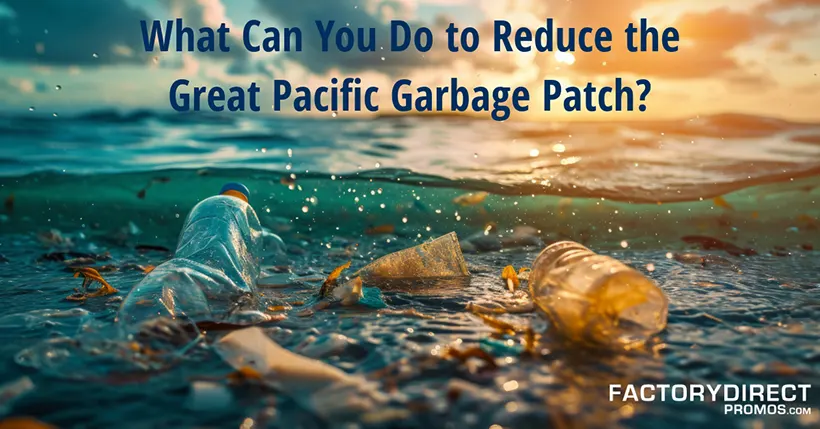How Disposable Plastic Created the Great Pacific Garbage Patch

The Great Pacific Garbage Patch is a stark reminder of the environmental impact of disposable plastic. Spanning an area twice the size of Texas, this massive accumulation of marine debris has become an emblem of disposable culture, with plastic being the primary culprit. Disposable plastic products have contributed to the creation and growth of this environmental disaster, here’s some things that can help turn things around.
The Rise of Disposable Plastic
Disposable plastic products became common around the 1960s and 1970s. With its versatility, durability, and low production costs, plastic quickly became the material of choice for packaging, and single-use items, among many other things. In short, plastic is convenient.
Disposable plastic products promised revolutionized industries such as food packaging, beverage containers, and personal care products. From plastic bags and bottles to straws and utensils, single-use plastics quickly permeated every aspect of daily life, offering unparalleled convenience.
Mismanagement and Pollution
The convenience of disposable plastic comes at a significant cost to the environment. Inadequate waste management infrastructure, widespread littering, and improper disposal led to vast quantities of plastic entering rivers, streams, and, ultimately, the world’s oceans. Once in the marine environment, plastic waste is notoriously persistent. With time, plastic breaks down into smaller microplastics that severely threaten marine life.
The Great Pacific Garbage Patch
The Great Pacific Garbage Patch, located between Hawaii and California, is the largest accumulation of ocean plastic in the world. It is not a solid mass of debris but rather a vast area of concentrated marine litter, primarily composed of microplastics and larger plastic debris that has yet to break apart. Ocean currents and wind patterns converge to trap floating debris, creating a swirling vortex of garbage that spans thousands of miles across the Pacific Ocean.
Environmental Impact
The environmental impact of the Great Pacific Garbage Patch is far-reaching. Marine animals can easily mistake plastic debris for food, ingest harmful toxins, and suffer from internal injuries or blockages, often resulting in starvation or death. Additionally, plastic pollution disrupts marine ecosystems and poses risks to human health by consuming contaminated seafood.
Addressing the Plastic Problem
Cleaning up the Great Pacific Garbage Patch isn’t feasible due to the sheer scope of the problem. By some estimates, 67 ships working to remove ocean litter could spend an entire year and only remove less than 1% of the trash. However, many groups are doing fantastic work to clean up ocean litter, and progress is being made.
Addressing the problem of plastic pollution requires a multifaceted approach involving global cooperation, policy interventions, technological innovations, and individual behavior change. Efforts to reduce plastic consumption, promote recycling, improve waste management, and implement bans on single-use plastics are crucial steps toward reducing plastic pollution.
Do Your Part
The Great Pacific Garbage Patch is a disaster and a reminder of the urgent need for collective action to address plastic pollution. By rethinking our reliance on disposable plastics and embracing more sustainable alternatives, we can work towards a cleaner, healthier future for our oceans and the planet as a whole. As Earth Day approaches, let’s work to reduce plastic pollution and find a more sustainable and environmentally friendly way to exist.
